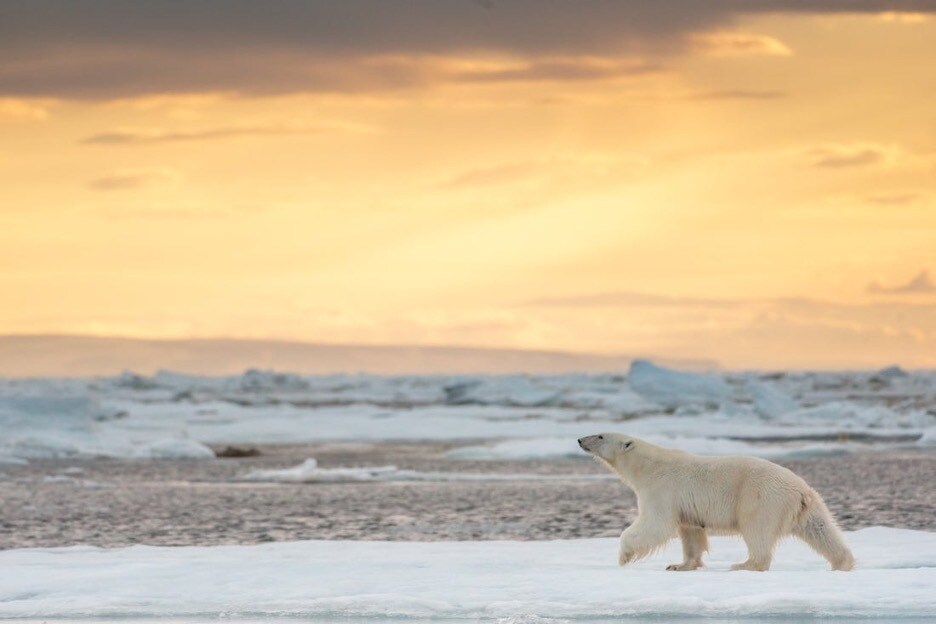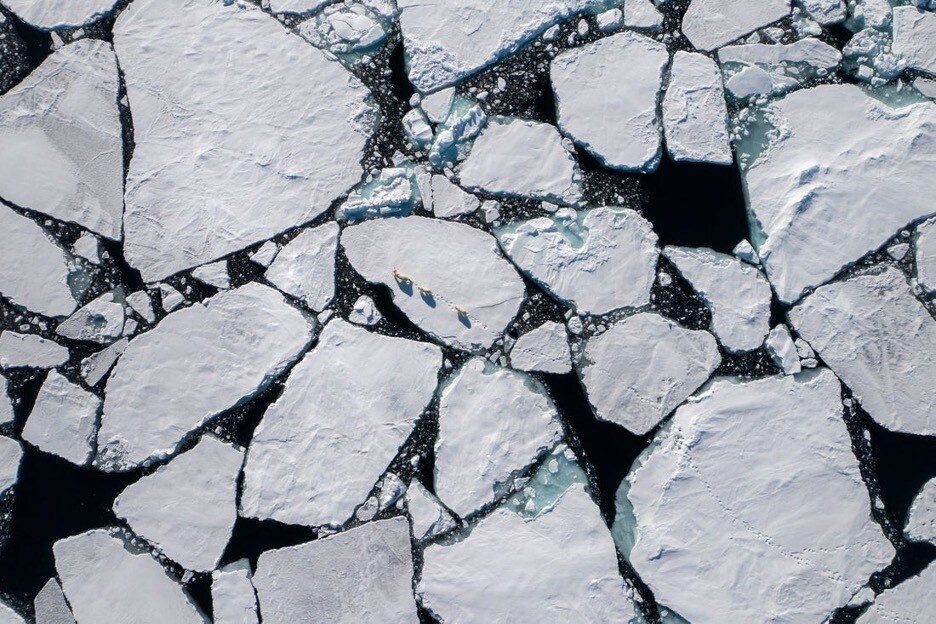
The icy arctic is changing, and the wildlife that call it home must change with it. In the new Disneynature film Polar Bear, the resilience of a small polar bear family is put to the test. The movie follows a new polar bear mother as she uses her own childhood memories to guide her cubs in a changing Norwegian wilderness. Premiering Earth Day (April 22) on Disney+, the film provides a remarkably intimate look at life in one of the most isolated places on Earth.
The brilliance of Polar Bear was made possible by the orchestrations of a seasoned team. As narrator, award-winning actress Catherine Keener’s soothing voice illustrates this extraordinary exhibition of familial love in an uncertain future. Longtime colleagues Alastair Fothergill and Jeff Wilson worked seamlessly as co-directors for the film. Together they have invested over two decades into studying wildlife, and are the directing team behind Disneynature’s Penguins and Monkey Kingdom. Along with Fothergill and Wilson, Roy Conli, Jason Roberts, and Keith Scholey produced the film.
Polar Bear documents the slow but steady transformation of the arctic through the eyes of polar bears. It was filmed over the span of about 2 and a half years, allowing viewers to watch the young brother and sister cubs grow up in an area just miles from the North Pole. The cubs prance through the snow as their mother keeps an eye on them while still allowing them to be young. With each passing day she teaches them to hunt, to avoid dangerous and much larger male bears, and to stick together. Simultaneously, the changing seasons affect everything from the range of prey to the thickness of the ice. Despite being raised in an environment that was much different than it is now, the mother polar bear must adapt both for herself and her cubs. “Like previous Disneynature films, Polar Bear offers an incredibly beautiful, truly cinematic experience,” said producer Roy Conli. “In my mind, kids will embrace the heart of this film the more they see it, building an appreciation for the natural world that grows as they do.”

The team worked amid enormous challenges to capture the polar bear family over time. Some of the bears can be just as dangerous as the elements. “One of the things about polar bears is that they’re one of the very few animals that actually hunt people,” said co-director Alastair Fothergill. “That was something we had to be very careful about the whole way through the filming. But also every bear is a different character. It was very important to get to know the bears and to be sure that they were the right sort of bears. By that I mean the ones that are not gnarly.”
Picking the perfect bears made filming in the sub-zero conditions much easier to deal with. Everything had to be planned, from setting up base camp that could withstand the winds, to meticulously tracking the polar bears’ experiences. “Research and planning is so central to everything that we do,” said co-director Jeff Wilson. “That allows us to take advantage of the magic when it happens.” They began by studying scientific projects that documented polar bear behavior. Those studies were done over at least 50 years. “Our job is to be present in the presence of the bear for as long as we possibly can,” he said. “There’s an enormous amount of planning that goes into how to be out there surviving in temperatures that are down to negative 45 degrees, and to be safe and to work.” That process alone took between three and four years. Thankfully the team had some help from teammates with solid expertise in the field. “We’re working with some of the world’s best guides — people who really understand how to function and how to work in the sea-ice environment where the bears live,” Wilson explained. “It’s an incredibly dangerous environment to work in. So while our job is to construct the narrative and come up with the film and bring the story to the table, we’re very reliant on people whose expertise lies in knowing the sea ice and the bear science, and we build on that.”

Whether the bears were frolicking in the water or hunting prey, like walruses along the ice, the film brings viewers up close. There are a few unsung heroes and industry tricks that can be thanked for the one-of-a-kind experience. “We record a lot of wild tracks and natural sound. But nobody’s invented a sound system that works as well as a zoom lens [does for visuals],” said Fothergill. The film crew was far away from the bears for safety reasons, but that made it virtually impossible to pick up sounds like the bear’s footsteps. “If you were that close, the bear would get you. So instead we do what’s called foleys,” Fothergill shared, referring to creatively-made sound effects that complement films. “In our case, the way to [make the sound for] a polar bear foot in the snow is to fill a stocking with custard powder and rub it on a table. But that's a trade secret, so don’t tell anybody that,” he said, laughing.
Disneynature’s Polar Bear is now streaming exclusively on Disney+.
For more Disney+ news and updates, follow @DisneyPlus on YouTube, Facebook, Twitter, and Instagram.
 Disney.com
Disney.com